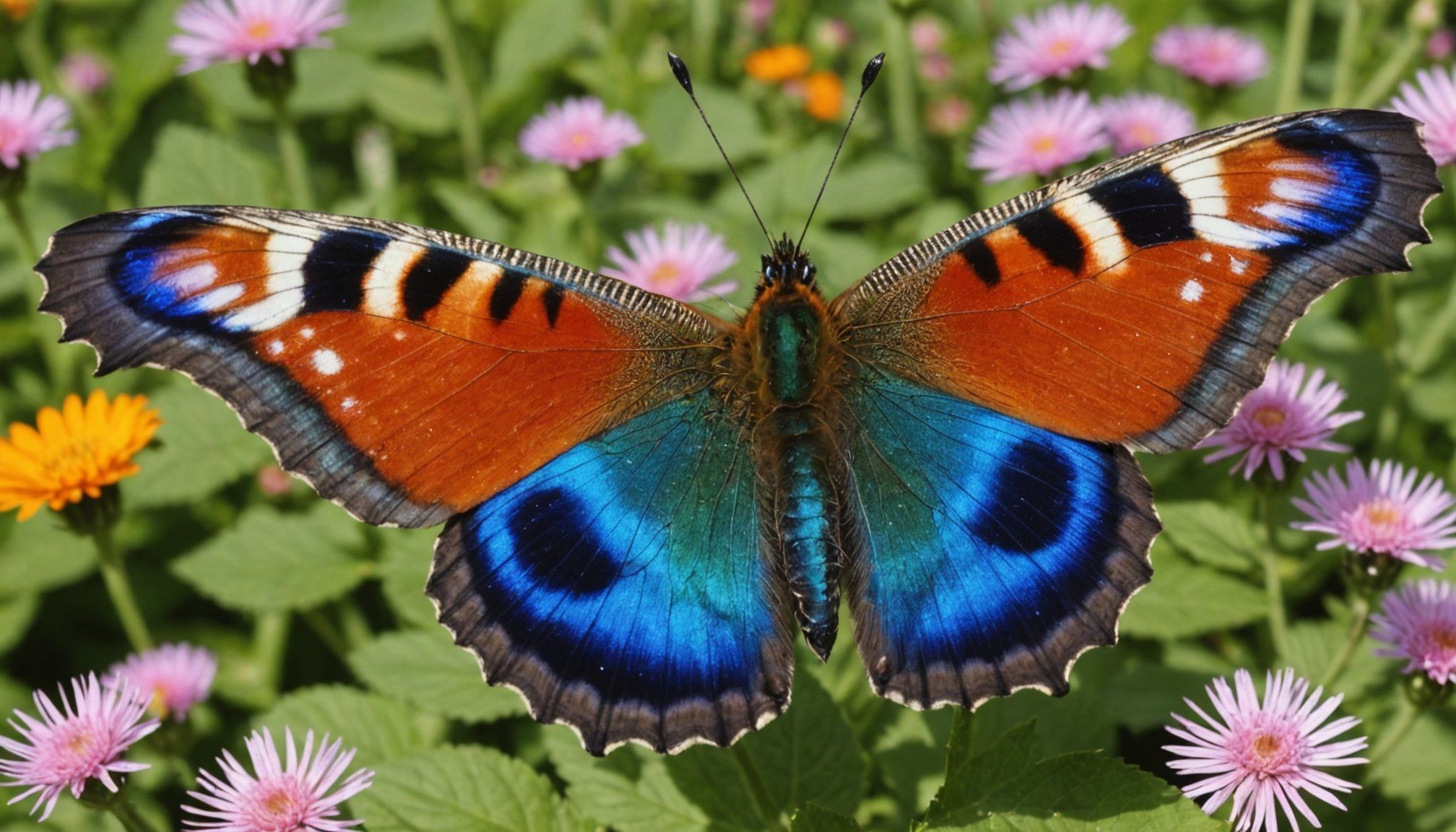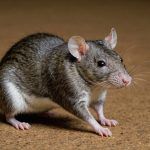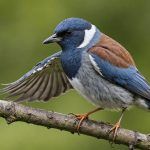Introduction to British Peacock Butterflies
British Peacock Butterflies are not just a beautiful sight in gardens but play a crucial role in promoting biodiversity. These butterflies, renowned for their stunning eye-patterned wings, are important pollinators in the ecosystem. Their presence is a sign of a healthy, balanced environment.
The butterfly lifecycle consists of four stages: egg, larva (caterpillar), pupa (chrysalis), and adult butterfly. Each stage requires specific conditions to thrive. For example, caterpillars need suitable host plants, while adult butterflies are in search of nectar sources. As pollinators, adult butterflies contribute to the reproduction of many flowering plants, thereby supporting a diverse range of species.
Additional reading : Mastering Rat Tricks: Proven Techniques for Training Your Pet Rat Effectively
Supporting native species like the British Peacock Butterfly in gardening is vital. Gardens can be transformed into biodiversity hotspots by planting native flora that provides food and shelter throughout the butterfly lifecycle. Encouraging these butterflies not only enhances garden biodiversity but also supports the broader ecological health of the area.
Promoting an environment where British Peacock Butterflies can thrive encourages a rich tapestry of life. By understanding and accommodating their needs, gardeners can play an active role in preserving these vibrant members of the ecosystem. This dedication to understanding and promoting biodiversity is as rewarding as it is environmentally crucial.
Also to read : Top Strategies for Seamlessly Introducing a New Puppy to an Older Dog in Your UK Home
Key Characteristics of Plants that Attract British Peacock Butterflies
British Peacock Butterflies are particularly drawn to a range of plants for butterflies that serve as both nectar sources and larval host plants. These plants offer vital resources for every stage of the butterfly’s life cycle. Nectar sources are crucial as they provide food for adult butterflies, enabling them to sustain energy and lay eggs for the next generation. Ideal nectar sources include plentiful blooms with easy access to nectar, such as marjoram, buddleia, and echinacea. These species are not only rich in nectar but also vibrant in colour, making them highly attractive.
Meanwhile, larval host plants play a critical role in nurturing the caterpillar stage. These plants provide the necessary sustenance for caterpillars to grow and successfully transition into adult butterflies. Nettle and hop plants are excellent choices, as they offer ample nourishment and are often found in the natural habitats of the British Peacock Butterfly.
Understanding and incorporating these key features in gardens or natural landscapes can greatly enhance the butterfly-friendly environment. This supports the butterfly population by ensuring that both adult and juvenile butterflies have access to essential resources, promoting their survival and reproduction in the ecosystem.
Recommended Plants for Nectar Sources
Choosing the best nectar plants can significantly boost your ability to attract pollinators to your garden. Selecting butterfly-friendly flowers is key to this endeavour. Below, we discuss three excellent choices.
Echinacea (Coneflower)
Echinacea, commonly known as Coneflower, boasts vibrant, daisy-like blooms that catch the eye. To thrive, it requires well-drained soil and full sun exposure. It’s a magnet for the British Peacock Butterflies and other pollinators, making it a standout choice among butterfly-friendly flowers. Ease of care is a perk; regular watering, especially in dry spells, and occasional deadheading will promote fresh growth.
Lavandula (Lavender)
Lavender is known for its aromatic, purple flowers and is a favourite among butterflies. Planting lavender is straightforward – it prefers sunny gardens and alkaline soils. Apart from its visual and olfactory appeal, lavender supports biodiversity by providing essential nectar. Prune after flowering to encourage bushy growth and prevent woody stems.
Buddleja (Butterfly Bush)
The Butterfly Bush, or Buddleja, is lauded for its long flowering spikes that attract butterflies like the British Peacock. It’s low-maintenance and hardy. For optimal growth, cultivate it in well-drained soil with partial to full sun. Regular pruning after flowering season maintains its size and shape, ensuring it remains an enticing nectar source year after year.
Recommended Larval Host Plants
Choosing the right host plants is essential for supporting the caterpillar food sources critical to the butterfly lifecycle.
Urtica dioica (Stinging Nettle)
Stinging nettle, or Urtica dioica, plays a crucial role as a host plant for caterpillars. Its leaves are an essential food source, contributing significantly to many butterfly species. For successful growth, stinging nettles require rich, moist soil and thrive best in sunny to partially shaded areas. Regular weeding and maintaining soil quality aids in keeping these plants healthy. Beyond catering to butterflies, stinging nettles hold profound ecological importance, supporting various insects and birds.
Verbascum (Mullein)
Mullein’s fuzzy leaves make it highly suitable as a host plant for caterpillars, especially of the British Peacock Butterfly. Its preference for well-draining, sandy soils and sunny spots makes mullein relatively easy to grow and ideal for first-time gardeners. Ensuring proper spacing between plants helps in promoting healthy growth. Beyond hosting caterpillars, mullein’s towering stalks add aesthetic value to gardens. By supporting mullein, gardeners can directly contribute to the thriving lifecycle of British Peacock Butterflies, fostering a robust and diverse wildlife ecosystem in their backyards.
Garden Design Tips for Attracting Butterflies
Designing a garden that attracts butterflies involves thoughtful planning and a focus on creating diverse wildlife habitats. A multi-layered garden is essential for providing various habitats that cater to different butterfly species. Integrating layers such as ground cover, shrubs, and trees creates an ecosystem where butterflies can thrive, offering them places to feed, rest, and reproduce.
Successful planting strategies are crucial for inviting these beautiful creatures into your garden. Selecting a mix of nectar-producing flowers and host plants is a great starting point. Nectar plants like Buddleia and Lantana offer food for adult butterflies, while host plants such as milkweed cater to caterpillars. Grouping these plants together enhances their visibility to butterflies flying overhead.
Environmental considerations can significantly influence butterfly presence. Sunlight is a crucial factor; butterflies are cold-blooded creatures that rely on sunny spots to warm themselves. Thus, placing nectar plants in sunlit areas ensures they become attractive feeding stations. Additionally, providing wind protection, perhaps by planting hedges or using existing structures, helps create a calmer environment for butterflies to safely navigate.
By focusing on these key elements, your butterfly garden design will not only attract butterflies but also support their life cycle, fostering a lively and sustainable garden ecosystem.
Nurturing British Peacock Butterflies in Your Garden
Creating a garden that supports butterfly conservation requires attention to detail, particularly when ensuring the garden caters to all the life stages of butterflies. Each stage, from egg to adult butterfly, demands careful consideration of plant selection and habitat structure.
To support butterflies, provide plants suitable for all life stages. Growing nettles in a controlled area creates a perfect spot for female butterflies to lay their eggs. As caterpillars emerge, these nettles are their initial food source. Ensure plenty of these plants are available, maintaining a steady supply for hungry, growing caterpillars.
A butterfly thrives best in environments that are rich in nectar. Introduce a variety of flowering plants like buddleia and lavender, ensuring blooms are present throughout the year. Adult butterflies need these nectar-rich flowers to sustain their energy, making them a key component in any butterfly-friendly garden.
Creating a safe environment is also essential. Use natural, rather than chemical, pest control methods to avoid harming butterflies and their caterpillars. Encouraging biodiversity by incorporating hedges or small trees can provide additional shelter and food sources, inviting other wildlife to flourish. This enhances the diversity of the garden, making it not only a haven for butterflies but also for a multitude of other creatures.
Conclusion: The Importance of Butterfly Gardening
Gardening benefits extend beyond mere aesthetics. By deliberately planting to support butterflies, gardeners can contribute to ecological balance. Providing a suitable habitat for these delicate creatures impacts local wildlife significantly, as they play a crucial role in pollination and sustaining various plant species. This interaction not only helps in maintaining biodiversity but also supports the health of the ecosystem as a whole.
Every plant species cultivated in a butterfly garden participates in creating a sustainable environment. Each type offers unique advantages to the food web by providing nectar and habitats for butterflies and other insects. Milkweed, for instance, is vital for monarchs, while lantanas offer nourishment to a variety of butterfly species.
A garden thriving with butterfly-friendly plants furthers the impact on local wildlife by attracting other beneficial organisms, including bees and birds. By diversifying their garden, gardeners foster entire ecosystems in their backyards.
Adopting butterfly-friendly gardening practices is a fulfilling endeavor. It promotes a balanced ecosystem, encourages biodiversity, and invites an abundance of life to flourish. Engaging in such practices ensures that future generations continue to experience and appreciate the myriad benefits that come from living in harmony with nature. Taking proactive steps in butterfly gardening is an enjoyable way to support our planet.











